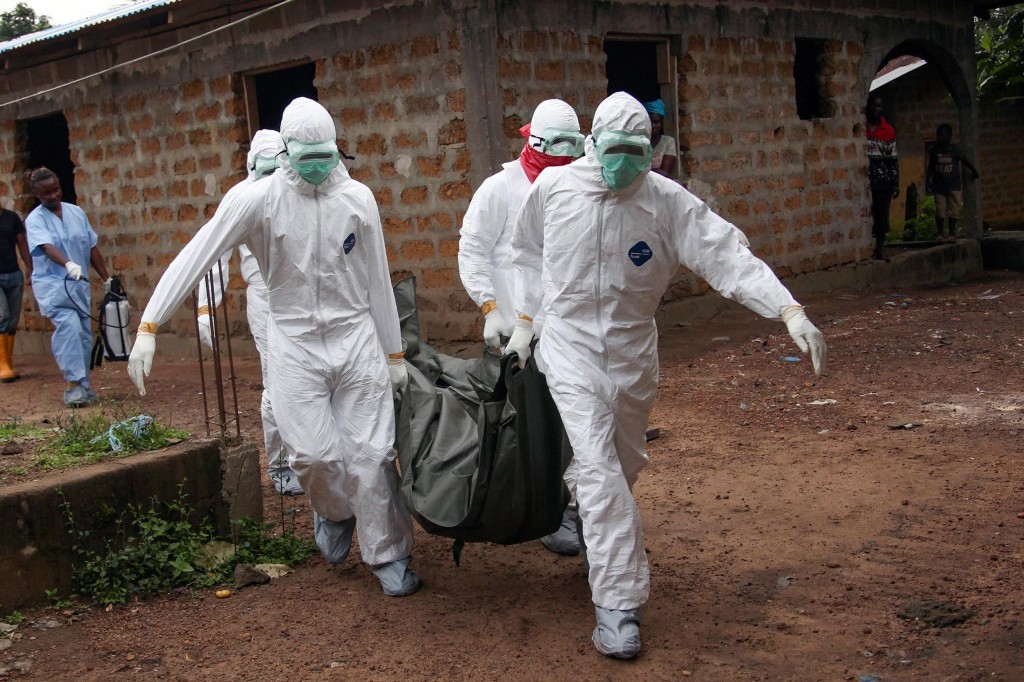21st Century Wire says…
Although out of the media eye as of late, the ebola crisis was truly devastating. Now that new cases have been confirmed in Liberia, we need to prevent a new crisis
In the following piece, we hear how the Ebola epidemic began and was able to spread through both fear and misdiagnosis. Some even believed their corrupt governments were simply engaging in a ruse. After that, it is understood that economic inequality massively influenced the extent to which countries were affected, with the poorest being hit the hardest.
Despite the claims of big-pharma and big-pharma-sponsored mainstream media, it was not pharmaceutical technology that saved the day. How well these pharmaceutical companies actually believe in their own products is questionable too, as they sought to immunise themselves from the legal ramifications that any damage an ebola vaccine might cause.

How many could have been saved with a better response? (Photo Credit: Makuruki)
Instead, we hear that it was the rapid deployment of measures to educate the populations in affected countries about the symptoms, and the need for the development of a healthcare system with doctors ready and able to deal with the problem; particularly in Liberia, the most badly affected nation, where there were only 51 doctors for its entire population of 4.2 million prior to the crisis.
Although Westerners who contracted the disease received the majority of mainstream media coverage, in the following piece we hear the truly devastating consequences for the people left in the aftermath of where the chaos began and was felt hardest.
With the re-emergence of new cases in Liberia, this piece is a must-read…
Read the analysis below and follow writer Marie Mulville here: http://twitter.com/Marie_Mulville
Lessons Learned From The Ebola Outbreak
It was 1976, when a blood sample taken from a Belgian nun in Zaire (now Congo) arrived in a laboratory in Antwerp for testing. The unassuming vial had been transported on a commercial plane, in someone’s hand-luggage containing a note.
It was thought the patient had contracted yellow fever but further tests were needed for clarification. It was this blood sample that contained the first identified case of a deadly virus – Ebola haemorrhagic fever. With further investigation, the virus was understood to have spread in a remote village north of Kinshasa, by contaminated needles. That same year, a total of 431 Ebola deaths were recorded, followed by a couple of sporadic isolated epidemics. Once the excitement of the discovery had subsided, the virus was then seemingly buried and forgotten. Fast forward 40 years and we see the worst outbreak of the Ebola virus on record, claiming, to date, 11,193 lives.
From July 2014, the horror in which the virus spread, with devastating consequences, was aired on international media, showing scenes that seemed to be from a sci-fi movie. Fear spread as quickly as the virus itself. Communities were unprepared and did not understand what was happening, blaming the health care workers in their special space suits for bringing the disease to them. Villages with unexplained deaths were stigmatised and many feared to report cases. It was only those in the last grips of illness who sought help from the clinics which were filled to capacity. Many lay on the streets dying in agony waiting to be admitted.
It is now believed that the first victim of the 2014 epidemic was a two year-old boy from a remote village in Guinea. His three-year-old sister also fell sick and died, followed by their mother. The symptoms the family displayed were mistaken for another not so lethal disease common to the area, which allowed the virus to spread undetected for three months. The virus then made its way to neighbouring Sierra Leone and Liberia through its porous borders and once it reached the heavily populated cities, such as Freetown, the death rate spiralled out of control.
The difference in the death rate between the richer countries like Nigeria, and the poorest such as Liberia, is significant. Nigeria has had 8 deaths caused by Ebola where as Liberia, the worst affected country, has had 4,806 deaths to date. At its peak, between 300-400 new cases were being reported on a weekly basis in August and September alone. The countries most successful in managing the virus had well-coordinated infrastructure already in place. Liberia and Sierra Leone however were still recovering after a period of protracted civil war ending only in 2003. Populations were also extremely weary of their governments in these countries and moves to ban the sale and consumption of bush meat, from which the virus originates, were largely ignored by the communities who believed this initiative to be part of another government scandal…
Continue reading the full story on Global Public Policy Watch
READ MORE ON THE EBOLA CRISIS: 21st Century Wire Ebola Files





